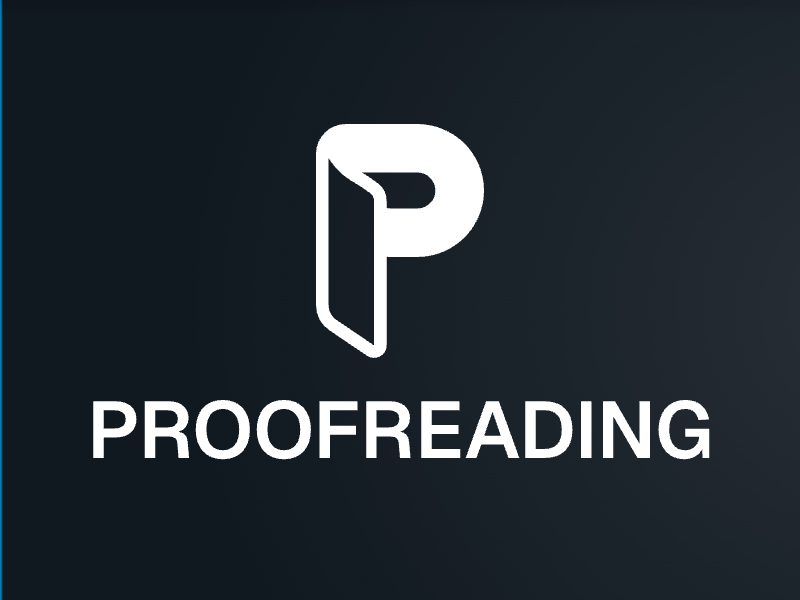Quick Guide to Proofreading | What is Proofreading and How to Proofread

What is proofreading? Proofreading is the meticulous process of reviewing written content to identify and correct errors in grammar, spelling, punctuation, and formatting. A proofreader ensures that your writing is polished, professional, and communicates ideas effectively. Without proper proofreading, even the most engaging content can lose its impact due to avoidable mistakes. For those seeking assistance, AI-powered tools and online platforms now offer innovative solutions to guide writers through this essential step. As Jyoti Chauhan, an expert in proofreading, states:
"Proofreading is absolutely vital to the production of high-quality documents. It can make the difference between writing that communicates successfully and writing that does not."
By refining your work, proofreading enhances credibility and maintains clarity, making your message more impactful.
Key Takeaways
Proofreading is essential for creating polished, error-free writing that enhances clarity and professionalism.
It focuses on correcting surface-level errors such as grammar, spelling, punctuation, and formatting, ensuring your message is communicated effectively.
Choosing the right proofreader involves considering their expertise, reputation, and pricing to ensure quality results.
AI-powered tools can assist in the proofreading process, but they should be complemented by human proofreaders for nuanced understanding and stylistic refinement.
Proofreading builds credibility and trust with your audience, making it a vital step in any writing process, whether for academic, business, or creative purposes.
Always proofread your work after completing writing and editing to catch any remaining errors before submission or publication.
What is Proofreading?

Proofreading is the final step in the writing process where you carefully review your work to ensure it is free from errors. It focuses on identifying and correcting mistakes in grammar, spelling, punctuation, and formatting. This process ensures that your writing is polished and ready for its intended audience. Whether you're preparing an academic essay, a business proposal, or even a casual email, proofreading helps you communicate your message clearly and professionally.
Definition of Proofreading
Proofreading involves a meticulous examination of your text to catch and correct surface-level errors. These include typographical mistakes, grammatical inconsistencies, and formatting issues. Unlike editing, which may involve restructuring content or improving clarity, proofreading ensures that your document is error-free and adheres to the highest standards of accuracy. By addressing these issues, proofreading enhances the overall quality of your writing.
"Proofreading is absolutely vital to the production of high-quality documents. It can make the difference between writing that communicates successfully and writing that does not." – Jyoti Chauhan
This quote highlights the importance of proofreading in ensuring your writing achieves its purpose effectively.
The Purpose of Proofreading
Ensuring Error-Free Content
Errors in your writing can distract readers and undermine your credibility. Proofreading eliminates these distractions by correcting mistakes such as poor sentence structure, misspellings, and grammatical errors. For example, a single typo in a job application can leave a negative impression on potential employers. By proofreading, you ensure your content is accurate and professional, which helps you make a strong impact.
Enhancing Readability and Professionalism
Proofreading improves the readability of your text by refining its flow and structure. Clear and concise writing allows your audience to understand your message without confusion. Additionally, polished content reflects professionalism, whether you're submitting an academic paper or sharing a blog post. A well-proofread document demonstrates your attention to detail and commitment to quality, which builds trust with your readers.
By understanding what proofreading entails and its purpose, you can appreciate its role in creating high-quality written communication. Proofreading is not just about fixing errors; it is about presenting your ideas in the best possible way.
Why is Proofreading Important?
Proofreading plays a vital role in ensuring that your writing achieves its intended purpose. It helps you refine your content, making it clear, professional, and impactful. By eliminating errors and enhancing readability, proofreading ensures that your message resonates with your audience.
The Role of Proofreading in Written Communication
Building Credibility and Trust
Your writing reflects your professionalism and attention to detail. Errors in grammar, spelling, or punctuation can make your work appear careless, which may lead readers to question your credibility. Proofreading allows you to present polished content that builds trust with your audience. For instance, a well-proofread business proposal demonstrates your commitment to quality, increasing the likelihood of a positive response.
"Proofreading is one of the most important and beneficial ways to ensure that what we are writing will not lead to any misunderstandings or make us sound unprofessional."
This quote emphasizes how proofreading safeguards your reputation and ensures that your writing leaves a lasting impression.
Avoiding Miscommunication and Errors
Mistakes in your writing can lead to confusion or misinterpretation. Proofreading helps you identify and correct these issues before they reach your audience. For example, a misplaced comma in a sentence can completely change its meaning, potentially causing misunderstandings. By carefully reviewing your work, you ensure that your ideas are communicated accurately and effectively.
Examples of When Proofreading is Essential
Academic Papers
Academic writing often involves complex ideas and arguments. Proofreading ensures that your work is free from errors and maintains clarity. It helps you refine awkward sentence structures and eliminate ambiguous language, making your arguments easier to understand. Whether you're submitting a research paper or a dissertation, proofreading enhances the quality of your work and ensures that your readers can engage with your ideas.
Business Documents
In the business world, clear and professional communication is crucial. Proofreading ensures that your emails, reports, and proposals are error-free and convey your message effectively. A single typo in a business document can harm your credibility and affect important decisions. By proofreading, you demonstrate professionalism and attention to detail, which can strengthen your business relationships.
Creative Writing and Publishing
Creative writing relies on engaging and persuasive language to captivate readers. Proofreading helps you polish your work, ensuring that it flows smoothly and maintains its impact. Whether you're writing a novel, a blog post, or a screenplay, proofreading eliminates distractions caused by errors, allowing your creativity to shine. It ensures that your audience focuses on your story rather than the mistakes in your text.
Proofreading is essential in various contexts, from academic writing to creative projects. By understanding its importance, you can elevate the quality of your work and communicate your ideas with confidence.
What Types of Errors Does Proofreading Address?
Proofreading is a critical step in the writing process that ensures your content is polished and error-free. It focuses on identifying and correcting specific types of mistakes that can detract from the quality and professionalism of your work. By addressing these errors, proofreading enhances clarity and ensures your message is communicated effectively.
Common Errors Corrected During Proofreading
Grammar and Syntax Issues
Grammar and syntax errors can disrupt the flow of your writing and confuse your readers. Proofreading helps you identify and correct these issues, ensuring that your sentences are structured correctly and follow standard grammatical rules. For example, subject-verb agreement errors or misplaced modifiers can alter the meaning of a sentence. A proofreader ensures that your writing adheres to proper grammar, making it easier for your audience to understand your ideas.
Spelling and Punctuation Mistakes
Spelling and punctuation mistakes can undermine the credibility of your work. Proofreading eliminates these errors by carefully reviewing each word and punctuation mark. For instance, a misplaced comma can change the meaning of a sentence, while a misspelled word can distract readers from your message. By addressing these mistakes, proofreading ensures that your writing appears professional and polished.
Formatting Inconsistencies
Formatting inconsistencies can make your document look unprofessional and disorganized. Proofreading ensures that your text maintains a consistent format, including font styles, headings, spacing, and alignment. For example, inconsistent use of bullet points or varying line spacing can confuse readers and detract from the overall presentation of your work. A proofreader ensures that your document follows a uniform style, enhancing its readability and visual appeal.
The Scope of Proofreading vs. Other Editing Processes
Proofreading differs from other editing processes in its focus and scope. While editing involves improving the structure, clarity, and flow of your content, proofreading concentrates on surface-level errors. It serves as the final step in the writing process, ensuring that your document is free from grammatical, spelling, and formatting mistakes.
"Proofreading is the final step to ensure a flawless manuscript, focusing on grammar, punctuation, spelling, and more."
This distinction highlights the importance of proofreading as a complementary process to editing. Editing refines the content, while proofreading ensures its accuracy and professionalism. Together, these processes create a polished and impactful piece of writing.
By understanding the types of errors addressed during proofreading, you can appreciate its role in producing high-quality content. Proofreading is not just about fixing mistakes; it is about presenting your ideas in the best possible way.
Proofreading vs. Editing: What’s the Difference?
Proofreading and editing are two distinct processes in the writing journey. Each serves a unique purpose, ensuring your content reaches its highest potential. Understanding their differences helps you decide which service suits your needs.
Key Differences Between Proofreading and Editing
Focus on Surface-Level Errors vs. Content Structure
Proofreading focuses on surface-level errors. It identifies and corrects mistakes in grammar, spelling, punctuation, and formatting. This step ensures your document is polished and error-free. For instance, proofreading would catch a misplaced decimal point in a financial report, preventing costly misunderstandings.
Editing, on the other hand, dives deeper into the content. It improves the structure, clarity, and flow of your writing. An editor might reorganize paragraphs, refine arguments, or suggest changes to enhance readability. While proofreading ensures accuracy, editing shapes the overall message.
"Proofreading is the final step to ensure a flawless manuscript, focusing on grammar, punctuation, spelling, and more."
This quote highlights how proofreading complements editing by addressing the finer details after structural improvements.
Timing in the Writing Process
Proofreading occurs at the final stage of the writing process. It acts as the last quality check before publication or submission. For example, during the Mariner 1 mission in 1962, a missing hyphen in the code led to a failed launch. Proofreading such technical documents could have prevented this costly error.
Editing takes place earlier. It refines the draft, ensuring ideas are clear and well-organized. By addressing content-level issues first, editing lays the foundation for effective proofreading.
When to Choose Proofreading Over Editing
You should choose proofreading when your content is complete and ready for review. It is ideal for catching minor errors that might distract readers. For example, proofreading ensures that creative works like novels or screenplays maintain their impact without typographical distractions. Similarly, it safeguards against errors in business documents, such as annual reports, where even a small mistake can harm credibility.
Editing is more suitable when your draft needs improvement in structure or clarity. If your ideas feel disorganized or your arguments lack coherence, editing provides the necessary adjustments. For academic papers, editing ensures your research is presented logically, while proofreading polishes the final version.
By understanding these differences, you can make informed decisions about what your writing needs. Whether you require editing to refine your ideas or proofreading to perfect your text, both processes play a crucial role in creating high-quality content.
How to Choose the Right Proofreader
Selecting the right proofreader ensures your writing achieves its highest quality. A skilled proofreader refines your work, making it clear, professional, and error-free. To make an informed choice, consider several key factors and explore reliable sources for finding professional proofreaders.
Factors to Consider When Selecting a Proofreader
Expertise and Qualifications
A proofreader’s expertise directly impacts the quality of their work. Look for someone with a strong command of language and a background in your specific field. For academic writing, choose a proofreader familiar with citation styles like APA or MLA. For business documents, select someone experienced in professional communication. Certifications or training in proofreading can also indicate their qualifications.
"Effective interviews help identify the best candidates based on skills, experience, and work style."
When evaluating proofreaders, ask about their experience and request samples of their previous work. This step ensures they meet your expectations and understand your needs.
Reputation and Reviews
A proofreader’s reputation reflects their reliability and skill. Check reviews or testimonials from previous clients to gauge their performance. Positive feedback often highlights their attention to detail, punctuality, and professionalism. If possible, seek recommendations from colleagues or friends who have used proofreading services.
Pricing and Budget
Proofreading costs vary depending on the complexity and length of your document. Set a budget and compare rates from different proofreaders. While affordability matters, avoid compromising quality for lower prices. A professional proofreader may charge more, but their expertise ensures better results. Always clarify pricing details upfront to avoid unexpected costs.
Turnaround Time and Availability
Deadlines play a crucial role in choosing a proofreader. Ensure they can deliver within your required timeframe without sacrificing quality. Discuss their availability before hiring, especially for urgent projects. A proofreader with a flexible schedule can accommodate last-minute requests, making them a valuable choice for time-sensitive tasks.
Where to Find Professional Proofreaders
Freelance Platforms
Freelance platforms like Upwork and Fiverr connect you with proofreaders worldwide. These platforms allow you to review profiles, check ratings, and compare prices. Many freelancers specialize in specific types of proofreading, such as academic or creative writing. Use these platforms to find a proofreader who aligns with your requirements.
Professional Proofreading Services
Professional proofreading services offer a team of experts with diverse skills. Companies like Enago provide specialized services tailored to academic, business, or creative needs. These services ensure high-quality results and often include additional features like formatting or plagiarism checks. Opt for professional services when you need guaranteed accuracy and reliability.
Recommendations and Referrals
Personal recommendations often lead to trustworthy proofreaders. Ask colleagues, professors, or friends for referrals. They can share their experiences and suggest proofreaders who delivered excellent results. Referrals save time and provide confidence in your choice.
By considering these factors and exploring these sources, you can find a proofreader who meets your needs. Whether you choose a freelancer, a professional service, or a recommended expert, the right proofreader enhances your writing and ensures it stands out.
The Role of AI and Online Tools in Proofreading

Technology has revolutionized the way you approach proofreading. AI-powered tools and online platforms now offer innovative solutions to enhance the quality of your writing. These tools provide speed, accessibility, and cost-effectiveness, making them valuable resources for writers, students, and professionals alike. However, understanding their benefits and limitations is essential to using them effectively.
Benefits of Using AI for Proofreading
Speed and Efficiency
AI tools process large volumes of text in seconds. They quickly identify errors in grammar, spelling, punctuation, and formatting. This efficiency saves you time, especially when working on lengthy documents like research papers or business reports. For example, AI-driven tools powered by Natural Language Processing (NLP) algorithms can scan and analyze thousands of words almost instantly. This capability makes them indispensable for tight deadlines or high-volume projects.
Accessibility and Cost-Effectiveness
AI proofreading tools are widely accessible. Many platforms offer free or affordable options, making them suitable for individuals with limited budgets. You can access these tools online from anywhere, eliminating the need for specialized software or equipment. Their user-friendly interfaces allow even beginners to proofread their work with ease. This accessibility ensures that high-quality proofreading is no longer restricted to those who can afford professional services.
Limitations of AI Proofreading Tools
Lack of Contextual Understanding
Despite their advanced algorithms, AI tools struggle with contextual nuances. They may fail to recognize subtle differences in meaning or tone. For instance, an AI tool might flag a grammatically correct sentence as incorrect because it doesn’t understand the context. This limitation can lead to unnecessary changes that alter the intended message of your writing.
Inability to Address Stylistic Nuances
AI tools focus on technical accuracy but often overlook stylistic elements. They cannot adapt to specific writing styles or preferences. For example, creative writing or academic papers often require a unique tone or adherence to specific citation formats. AI tools lack the human insight needed to refine these stylistic details, which can impact the overall quality of your work.
Combining AI Tools with Professional Proofreaders
To achieve the best results, consider combining AI tools with professional proofreaders. AI tools handle surface-level errors efficiently, providing a solid foundation for further refinement. Professional proofreaders bring contextual understanding and stylistic expertise to the table. They ensure that your writing aligns with your goals and resonates with your audience.
"While AI tools excel at speed and consistency, human proofreaders offer nuanced judgment and creative thinking that technology cannot replicate."
This combination allows you to leverage the strengths of both approaches. Use AI tools for initial reviews and rely on professional proofreaders for final polishing. Together, they create a comprehensive proofreading process that enhances the clarity, professionalism, and impact of your writing.
By understanding the role of AI and online tools in proofreading, you can make informed decisions about how to use them effectively. These tools serve as valuable aids, but human expertise remains irreplaceable for achieving the highest standards of quality.
Proofreading plays a vital role in creating error-free, professional, and credible written communication. It ensures your content is polished, clear, and impactful, helping you convey your message effectively. When choosing a proofreader, focus on key factors like expertise, reputation, and pricing to make the best decision for your needs. By prioritizing proofreading, you elevate the quality of your writing and establish trust with your audience. Whether you use professional services, AI tools, or a combination of both, proofreading remains an essential step in achieving excellence in your work.
FAQ
What is proofreading?
Proofreading is the process of carefully reviewing a document to identify and correct errors in grammar, spelling, punctuation, and formatting. It ensures that your writing is polished and free from mistakes, making it clear and professional.
Why is proofreading important?
Proofreading is essential for creating high-quality content. It helps eliminate errors that can distract readers and undermine your credibility. By refining your work, proofreading enhances clarity and ensures your message is communicated effectively.
What does a proofreader do?
A proofreader examines your text to detect and correct errors in grammar, punctuation, spelling, and formatting. They ensure consistency and polish, making your writing more readable and professional. Their role is crucial in presenting error-free content.
Why do people need proofreaders?
Proofreaders help ensure that your work is free from mistakes. They bring a fresh perspective to your writing, catching errors you might overlook. Their expertise guarantees that your content meets the highest standards of accuracy and professionalism.
How is proofreading different from editing?
Proofreading focuses on surface-level errors like grammar, spelling, and punctuation. Editing, however, involves improving the structure, clarity, and flow of your content. Proofreading is the final step, while editing occurs earlier in the writing process.
When should you proofread your work?
You should proofread your work after completing the writing and editing stages. It serves as the final review to catch any remaining errors before submission or publication. This step ensures your content is polished and ready for its audience.
Can AI tools replace human proofreaders?
AI tools can assist with identifying surface-level errors quickly and efficiently. However, they lack the contextual understanding and stylistic judgment of human proofreaders. Combining AI tools with professional proofreading provides the best results.
What types of documents require proofreading?
Proofreading is essential for various types of documents, including academic papers, business proposals, creative writing, emails, and blog posts. Any written content benefits from proofreading to ensure clarity, professionalism, and accuracy.
How can you choose the right proofreader?
To choose the right proofreader, consider their expertise, qualifications, reputation, and pricing. Look for someone experienced in your specific field and check reviews or samples of their work. Ensure they can meet your deadlines without compromising quality.
Is proofreading necessary for short documents?
Yes, even short documents benefit from proofreading. Errors in brief texts, such as emails or social media posts, can still affect your credibility. Proofreading ensures that every piece of writing, regardless of length, is accurate and professional.
See Also
Choosing Between Microsoft Word And AI Proofreading Tools
How Proofreading Contributes To Academic Writing Achievement
Comparing Real-Time AI Proofreading With Classic Editing Services
Best 20 Freelance Proofreaders And Editors For 2024
Five Essential Editing Services Writers Need To Discover In 2024
